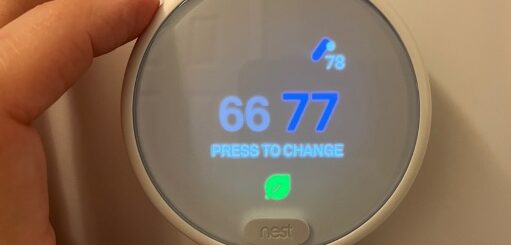Carbon Offsets: Balancing Our Carbon Footprint and Protecting the Environment

As concerns about climate change continue to grow, individuals and businesses alike are seeking effective ways to reduce their carbon footprint. One solution that has gained significant traction in recent years is the use of carbon offsets. These offsets offer a means to compensate for greenhouse gas emissions by investing in projects that reduce or remove carbon dioxide from the atmosphere. In this article, we will explore what carbon offsets are, how they are used, and their environmental benefits. Additionally, we will address the transparency and accountability concerns associated with offset purchases.
Understanding Carbon Offsets
Carbon offsets are a market-based approach to tackle climate change by enabling individuals or organizations to take responsibility for their carbon emissions. The concept revolves around the principle that emissions can be balanced by funding projects that either reduce emissions (mitigation) or remove carbon dioxide from the atmosphere (sequestration). These projects can encompass various activities, such as renewable energy generation, reforestation efforts, methane capture, or energy efficiency initiatives.
How Carbon Offsets Work
To utilize carbon offsets, individuals or businesses calculate their carbon footprint by estimating the amount of greenhouse gases they release into the atmosphere. Once this carbon footprint is determined, they can purchase offsets equivalent to their emissions. The funds generated from these purchases are then invested in projects that deliver an equivalent reduction in emissions elsewhere.
For instance, let’s consider a company that produces 1,000 metric tons of carbon dioxide annually. By purchasing carbon offsets, they can invest in a reforestation project that absorbs or removes an equivalent amount of carbon dioxide from the atmosphere. As a result, the company effectively neutralizes its emissions, offsetting the impact on the climate.
Environmental Benefits of Carbon Offsets
Carbon offsets play a vital role in mitigating climate change and preserving the environment. They offer several significant benefits:
- Greenhouse Gas Reduction: By investing in carbon offset projects, emissions are prevented or removed, effectively reducing the overall concentration of greenhouse gases in the atmosphere. This helps to combat global warming and its associated impacts, such as rising temperatures, extreme weather events, and sea-level rise.
- Promotion of Clean Technologies: Carbon offset projects often involve renewable energy generation or energy efficiency initiatives. These investments help accelerate the transition to a low-carbon economy by supporting the development and deployment of clean technologies.
- Sustainable Development: Many offset projects contribute to sustainable development in communities around the world. For example, reforestation efforts can create jobs, protect biodiversity, and enhance ecosystem services, while renewable energy projects can bring affordable and clean energy to underserved areas.
Ensuring the Integrity of Carbon Offsets
While the concept of carbon offsets is promising, concerns have been raised regarding the credibility and transparency of the market. To address these concerns, various standards and certifications have emerged to ensure the integrity of offset projects.
- Additionality: A key principle is the concept of additionality, which means that the offset project must result in emissions reductions beyond what would have occurred without the project. This principle ensures that offset investments truly make a positive environmental impact.
- Verification and Certification: Reputable carbon offset programs require independent verification and certification of projects to validate their claimed emission reductions. Third-party organizations assess project methodologies, monitor progress, and issue credits that represent verified emission reductions.
- Registry Systems: Offset transactions are recorded and tracked in registry systems, providing transparency and accountability. These systems allow buyers to verify that their purchased offsets have been retired and cannot be resold or double-counted.
- Standards and Accreditation: Various voluntary standards, such as the Verified Carbon Standard (VCS), the Gold Standard, and the Climate Action Reserve, ensure the credibility of offset projects. These standards provide guidelines for project development, monitoring, and verification.
Carbon offsets offer an essential tool in the fight against climate change, enabling individuals and businesses to take responsibility for their carbon emissions. By investing in offset projects, we can effectively reduce greenhouse gas emissions, promote clean technologies, and support sustainable development. To ensure the credibility of offset purchases, it is crucial to choose reputable programs that adhere to robust standards and certification processes. As the demand for carbon offsets continues to rise, it is imperative that the market maintains transparency, accountability, and environmental integrity to maximize the positive impact of offset investments. If you are interested in offsetting your carbon emissions for an upcoming trip or you are just curious to know how much carbon a typical road trip produces, you can calculate your carbon emissions below. You can also purchase emissions offsets through Sustainable Travel International via the emissions offset calculator below. Sustainable Travel International compensates Living Green through affiliate links.
References:
- United Nations Framework Convention on Climate Change (UNFCCC). “What Are Carbon Offsets?” [Online] Available: https://unfccc.int
- Gold Standard. “What Are Carbon Credits?” [Online] Available: https://www.goldstandard.org/what-we-do/impact-offsetting/what-are-carbon-credits
- Verified Carbon Standard (VCS). “Verified Carbon Standard.” [Online] Available: http://www.verra.org/programs/verified-carbon-standard



 Rob McCandless
Rob McCandless


